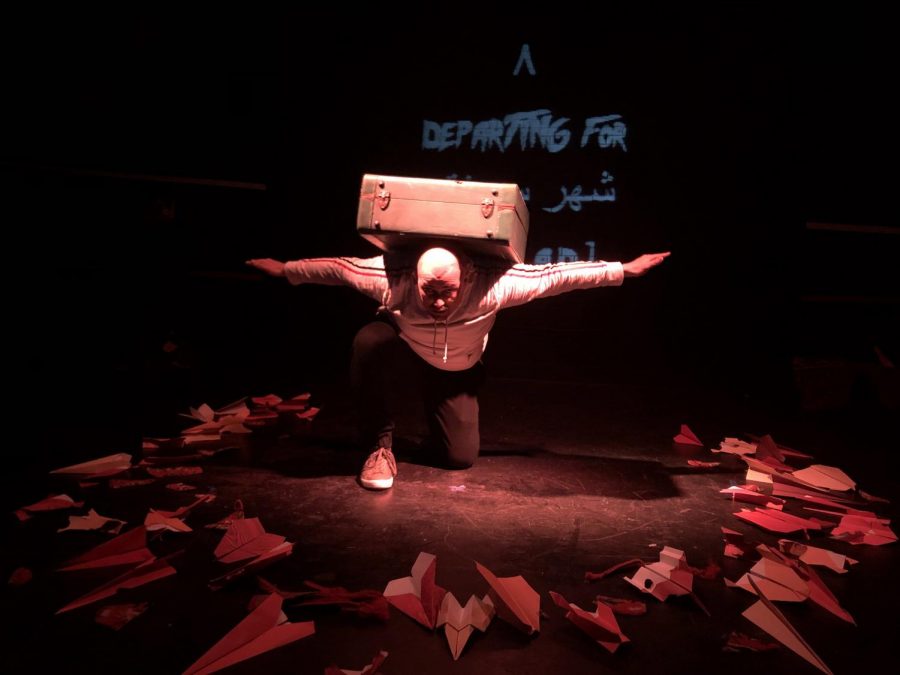‘Burnt City’ comments on U.S.-Iran relations
Mar 12, 2020
This weekend, UNI Interpreters Theatre presented three performances of “Burnt City: A One-Persian Show about U.S.-Iran Relations” at 7:30 in Lang Hall on Thursday, Friday and Saturday night. The show was created and performed by Josh Hamzehee, and included English and Farsi, fire and paper planes and commentary on the past and futures of the U.S. and Iran.
“Burnt City” traveled through time and distance using poetry, humor, Farsi, current political climates and dystopia to convey the parallels between domestic abuse and violence perpetrated by governments onto citizens.
Through a series of vignettes, Burnt City allowed audience members to catch a glimpse into Iranian culture and artifacts, personal and political struggles between the U.S. and Iran and a catastrophic prediction following the xenophobic and anti-immigrant sentiments the U.S. is currently exhibiting.
Set in the year 2032, this production looks back on events that led up to the present. Donald Trump is re-elected at age 88 to serve his fifth term after the thirty-third amendment was ratified in 2033. The U.S. is now on travel ban number five. There was a blackout of the 14th amendment, the one which guarantees natural citizenship. English has been established as the national language. The Statue of Liberty has crumbled, and citizens can now look on to the recently erected “Great Wall of America”.
For those of ethnically diverse (non-white) descent, this leads to deportation and alienation. In Burnt City, US-born Kurosh is deported to Iran because of his heritage.
He asks the elusive question: “What’s Blood got to do with It?” The blood of Iranian lives on American hands? The bloodlines of our ancestors and our cultural histories? The bloodshed in Iran and of its citizens?
Though the subject is often tough to comprehend for many Americans, Hamzehee presented the topic through pathways that many can access: emotion, humor, and empathy. He intertwined time and space, and both personal and national narratives, to create a unique and thought-provoking show.
He brought up national events, like when the U.S. unapologetically shot down Iran Air Flight 655, killing over 300 civilians, as well as cultural: the international wrestling struggle between Hulk Hogan and Iron Sheik in relation to cultural identity and perceptions.
Both setting and soundscape of this multi-faceted production added a sense of nuance, atmosphere and intensity to the intent of the show. Contrasts between light and dark, busy music in contrast to a single heart beating, and paper planes and Persian artifacts, lay at the heart of this powerful performance.
A large portion of the show derived from Hamzehee’s own confusion about growing up as the son of an Iranian military man who immigrated to Los Angeles in the late 1970s after the Iranian civil war. His sense of identity, appreciation, and belonging seemed to position him in both cultures, and at the same time, neither culture.
After a powerful performance, Hamzehee left the audience with a bittersweet taste in their mouth; things are not great right now, especially in terms of international relations and internal discrimination and violence. But, as individuals, we can begin to see that a better future begins with us. As Hamzehee said in his director’s note: “build bridges, not walls.”







